Pressure washer common questions
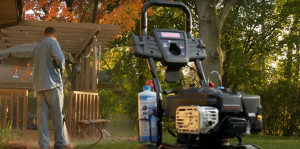

These common questions about pressure washers are the ones our experts hear the most often from our customers. You might also find the help you need by checking the common symptoms and solutions for pressure washers. When you’re ready to make a repair, search your model number to find replacement parts. Sears PartsDirect has the part you need, no matter where you bought your pressure washer.
How does a pressure washer work?
Water enters the pressure washer through the garden hose attached to the inlet connection on the pump. The engine or motor rotates a wobble plate that pushes pistons down to pressurize the water. Spring-loaded check valves in the pump manifold direct the pressurized water to the spray wand.
What type of fuel can I use in my pressure washer?
Use fresh, clean, unleaded gasoline with a minimum of 87 octane in a pressure washer. Gasoline with up to 10 percent ethanol (gasohol) is acceptable. Don’t use unapproved gasoline such as E85 in the pressure washer.
When should I change the engine oil in my pressure washer?
Change the oil in a new pressure washer after the first 5 hours of operation. After that, replace the oil after every 50 hours of operation or once a year.
Why won’t my pressure washer spray detergent?
If your pressure washer isn’t dispensing detergent, check the siphon hose for a clog and clean it, or replace the siphon hose if you can’t remove the clog.
If the small check ball valve in the detergent system hose fitting is stuck, the detergent won't flow into the spray water. Examine the check ball and free it up or replace the chemical injection system if necessary. A chemical injection repair kit is usually available for the pressure washer. The chemical injection repair kit contains the components necessary to replace the chemical injection system components.
If you’re using a high-pressure spray tip, the water flow in the system isn’t strong enough to siphon the detergent into the spray water. Use a low-pressure tip when using the chemical injection.
Why is the pressure relief valve opening on my pressure washer?
If you run the engine on your pressure washer for more than 5 minutes without pressing the trigger on the spray gun, circulating water in the pump can heat to more than 125°F. To help keep reduce the temperature of the static water, an unloader valve recirculates some of the water. But if the spray gun continues to run without being used, the thermal relief valve opens and discharges the hot water onto the ground to cool the pump.
Which tip should I use when pressure washing house siding?
When cleaning house siding with a pressure washer, follow the siding manufacturer's recommendations for cleaning. Some types of house siding can only withstand low-pressure spray; high-pressure spray can cause damage. If you don’t know the manufacturer’s recommendation, be safe by using the low-pressure spray tip on house siding.
Find out more about which tip to use on different types of jobs.
Can I supply the pressure washer with hot water?
Don’t connect a pressure washer to a hot-water source. Only tap water at room temperature should be connected to the inlet water supply of the pressure washer. Hot water is likely to overheat during the pumping process, causing the pressure relief valve to open and discharge hot water onto the ground.
Do I need to use pump conditioner in my pressure washer?
Pump conditioner helps preserve the seals and check valves in the pump when you store the pressure washer during the off-season. Use pressure washer pump conditioner to prolong the life of your pressure washer when storing the pressure washer for more than 3 months.
How do I store my pressure washer?
If you plan to store the pressure washer for more than 30 days, either drain all the fuel from the gas tank or add a fuel stabilizer to the gasoline in the tank. If you drain the fuel from the tank, run the pressure washer engine until the engine uses all the fuel in the carburetor and stops. You don’t have to drain the fuel if you use a fuel stabilizer.
Drain all the water from the pressure washer before storing the unit. To drain the water from the pressure washer, first shut the engine off, turn off the water supply and squeeze the spray trigger to relieve the trapped water that’s under pressure in the water system.
Next, disconnect the pressure hose from the spray gun and pump and drain the water from the pressure hose and nozzle extension. Empty the pump completely by disconnecting the spark plug and pulling on the recoil handle 5-6 times to remove almost all of the water from the pump. Finally, fill the pump with pump conditioner if you’re storing the pressure washer for more than 3 months.
Symptoms for gas pressure washers
Choose a symptom to see related pressure washer repairs.
Main causes: pump running for more than 5 minutes when the spray wand isn't being used, faulty pressure relief valve, ba…
Main causes: faulty unloader valve, bad pressure regulator…
Things to do: tune up the engine, inject pump saver into the water pump when storing the pressure washer for the winter…
Main causes: dirty air filter, stale fuel, clogged or dirty carburetor, bad unloader valve…
Main causes: stale fuel, gummed up carburetor, engine needs tune up, throttle and choke controls need adjustment, bad re…
Main causes: broken recoil spring, damaged recoil starter…
Main causes: using a high-pressure spray tip when applying detergent, clogged siphon tube, chemical injection system fai…
Main causes: overfilling engine with oil, improper fuel/air mixture, choke system problems, dirty carburetor, engine nee…
Main causes: insufficient water supply, clogged water inlet screen, clogged pressure hose, faulty pump check valves, stu…
Repair guides for gas pressure washers
These step-by-step repair guides will help you safely fix what’s broken on your pressure washer.
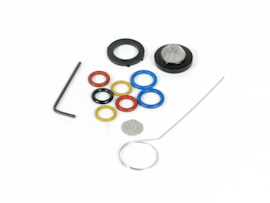
How to install a pressure washer O-ring kit
O-rings seal fittings on the pressure washer pump. Damaged seals allow water to leak from the pump. Follow these steps t…
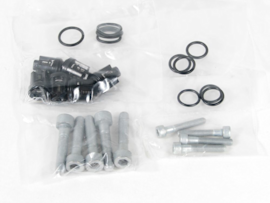
How to install a pressure washer check valve kit
Air in the inlet water supply can damage the check valves. If the pump won’t build up pressure due to damaged check valv…
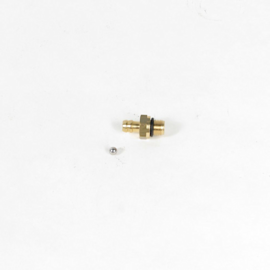
How to install a pressure washer chemical injection kit
The chemical injection valve draws detergent into the pump. If it’s not drawing detergent, use a repair kit to replace t…
Articles and videos for gas pressure washers
Use the advice and tips in these articles and videos to get the most out of your pressure washer.

Learn about all the convenient features on our Sears PartsDirect website that make your parts purchases easier.…

Learn about a new feature added to the Search Bar on Sears PartsDirect…
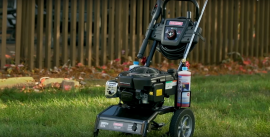
Follow this advice to winterize your pressure washer.…